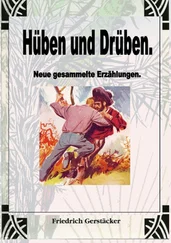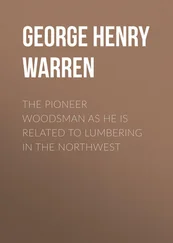For me, the period of observation was to help minimise mistakes I might otherwise have made in being too hasty and forcing my ideas on to an environment that I did not fully understand. It’s all too easy to arrive with pre-conceived ideas about land we wish to work, and then start implementing them, unaware of the damage we may be doing to the established order. Prickly Nut Wood has been woodland for at least 400 years, although the ground flora and earthworks would suggest longer. Who was I in my short life to feel I knew better than 400+ years of established plant, insect and animal relationships? Part of my observation was to study these relationships and learn through the changing seasons the patterns and activities of resident and migratory species. To help with this I kept notes and diary entries, and made links between food plants, caterpillars and their butterflies and moths, and woodland management techniques that encouraged the right environment to allow these species the opportunity to continue to survive and thrive within Prickly Nut Wood.
I have been watching the dead top of a large chestnut tree. It has bothered me since I first arrived here as it looks unhealthy and stands out above the coppice with its dead crown. It stands out all the more now the leaf has broken and everywhere has greened up. But the more I watch it, the more I have noticed what a popular spot it is for birds. It seems to be a viewing post for all visiting birds to the wood. Last night its purpose as a marking post was clearly pointed out to me when the woodland came alive with the ‘churring’ sound of the nightjar. Having flown from his winter retreat in Africa he had returned and picked this dead top of the chestnut from which to make his presence known. After a few minutes he stopped ‘churring’, swooped down, clapped his wings together and made for the large oak before beginning ‘churring’ once again. He then chose a birch before returning to the dead top of the chestnut tree to make his final call, his territory now clearly marked.
Without my time of observation, I might have followed my first impulse and felled the chestnut tree with the dead top, and never known of its importance to the nightjar or other birds. We have little understanding of the roles of particular trees in the lives of birds but even basic observation shows us that they spend a lot more time in direct relationship to trees than we do. With the exception of a few groups of forest-dwelling people around the world, it is unusual for us to live in trees, while for many species of birds it is clearly their usual location.
Many of our woodlands in the UK are managed based on plans that have taken little time for detailed observation, and many habitats are lost because of this. It is common for felling licences to be applied for to fell trees within a woodland, with only one visit having been carried out. If I had not been staying at Prickly Nut Wood at night, how would I have known that nightjars were migratory visitors to the land? The chances of seeing them in daytime are low, as they are highly camouflaged and stay on the ground. They do not create a proper nest, but scrape the ground and lay their eggs directly on to it.
My spring mornings would begin just before the awakening dawn chorus. On many mornings I would awake as the first glimmer of light brought form to the evolving silhouettes and wander over to the firepit and light a fire and put the kettle on.
Lighting a fire to boil water is a simple and satisfying experience, provided you are prepared and well stocked with firewood and kindling. My morning fire would begin with fine strips of birch bark, with small, dry twigs of sweet chestnut laid on top. I would light the fire and slowly blow into an old copper pipe with a flattened end, so as to direct my breath with good velocity wherever I pointed the pipe. As the fire took, I would build up the fire further with slightly larger pieces of chestnut. With stacks of dry material sorted into piles by their size, lighting a fire becomes as easy as turning on a cooker.
With the kettle on the fire, I would wait listening for the first sound to break the morning silence. I am still astonished how fast the chorus builds up. From the first delicate tones of the opening bird, within a couple of minutes there are so many birds singing that it becomes almost impossible to try to discern one bird from another. The dawn chorus in a broadleaf woodland in spring is truly one of the wonders of the world and a magical part of the environment I inhabit. Every year I am refreshingly amazed by its intensity of volume; friends who have stayed with me have resorted to ear defenders, so as not to be woken at 4.30 am. As for me, I am always happy to catch the first notes and will sometimes return to sleep after a brief ten-minute burst of choral bird song. To have such an array of birds within the woodland clearly shows that there is sufficient food and that it is an ideal habitat for them.
Observing the landscape of a woodland takes time. There is not the clear expanse of a grass field with hedgerows neatly marking the boundaries. A woodland offers little in the way of vistas to give you perspective of size or space. With an ancient woodland such as Prickly Nut Wood, which has not been cultivated by the plough and undulates across the landscape, much of the topography is hidden by the trees themselves. Added to this, Prickly Nut Wood had a thick wall of Rhododendron ponticum , which made the landscape impenetrable in places and further disguises the topography.
I remember clearly one of my first adventures, cutting a path through the rhododendron, bill hook in hand, and arriving suddenly at the base of a large oak tree. This tree, the largest in the wood, would stand out in any other landscape but here it was hidden amongst tall chestnut stems, birch re-growth and the blanket wall of established rhododendron. I estimate the tree to be around 300 to 350 years old, which is young to middle-aged for an oak tree. It has a circumference of more than 7 metres and a height of more than 25 metres. Its crown is similar to a parkland or field tree, in that it has spread and formed a large canopy. The regular cutting of the coppice woodland below it will have helped give it the light to expand and the coppice re-growth will have helped push the tree up taller. It stands proudly on a ridge and now I have cut the coppice to the north, the true branching pattern of the cerebral crown can be seen in its full glory. I have attached a swing seat to the oak and it makes a wonderful spot from which to survey the woodland and across to Blackdown beyond.
Having found the tree for the first time, I sat down on a mossy seat formed between the root buttresses and contemplated the changes that might have occurred during the life of a tree of this age. Perhaps germinating as a seed during the English Civil War, it will have been growing through countless changes, numerous wars and a good few king and queens. One of the buttresses has a large scar across it, angled as a woodsman would angle a cut to remove the buttress prior to setting the tree up for felling. The scar has calloused over and I like to think it was caused by a woodsman who, after beginning the cut, thought better of felling such a magnificent tree and decided to leave it to grow on. I am very thankful that he did.
It has also been struck by lightning on two occasions and carries the scars right down its trunk. The tree seems in good health and shows no signs of distress from this experience, bar the scars.
I often lie on the ground and look up through the vast array of branches, marvelling at the tree’s ability to hold up such a huge weight of timber high into the sky, and then consider the volume of water the tree is absorbing and then pumping through the sap layer to reach the millions of little leaves high above.
Читать дальше












